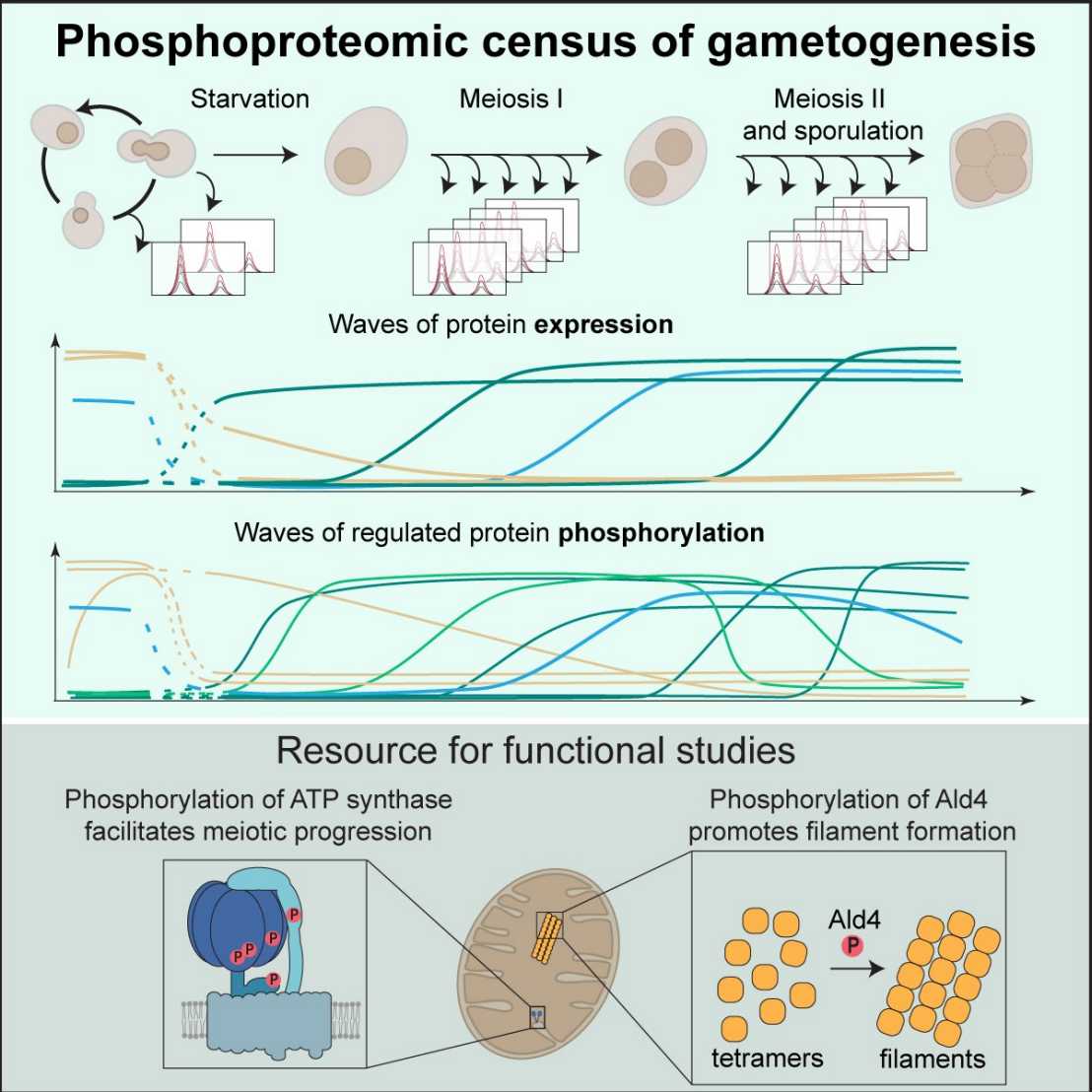A recent "Developmental Cell" paper by the Matos Lab (formerly IBC, now Max Perutz Labs in Vienna) in collaboration with the Pilhofer Lab (IMBB), the Beltrao Lab (IMSB), and the Aebersold Lab (IMSB) unveils a phosphoproteomic census covering the entire meiotic cell division program in budding yeast.

Sexually reproducing organisms rely on a specialized cell division program - meiosis - to form haploid gametes from diploid progenitor cells. At the completion of meiosis, gametes must inherit a haploid set of chromosomes as well as organelles and cytoplasmic content to ensure the development of viable offspring. To control meiotic progression and the production of "healthy" gametes, a vast array of cellular processes needs to be tightly controlled, coordinated, and orderly executed.
To understand how gametes form, researchers generated a proteomic and phosphoproteomic census covering the entire meiotic cell division program in the model organism budding yeast.
They found that coordinated waves of changing protein expression and phosphorylation modify nearly all cellular pathways to drive the meiotic progression and gamete formation. Leveraging this broad resource, researchers found that phosphorylation of the FoF1-ATP synthase complex is required for efficient gametogenesis. Moreover, visualizing meiotic mitochondria with cryo-electron tomography revealed elaborate filament assemblies of the aldehyde dehydrogenase Ald4, which is highly expressed and phosphorylated during meiosis. Notably, no filaments accumulated in a phosphorylation-resistant mutant of the conserved metabolic enzyme, suggesting that phosphorylation promotes the meiotic assembly of Ald4 filaments. Overall, the phosphoproteomic census can be used as a hypothesis generator to explore various cellular processes involved in gametogenesis.
Link to the paper in external page"Developmental Cell" and an accompanying paper in external page"Cell".






